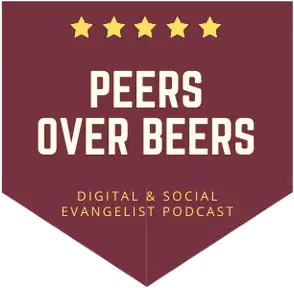
Metrics in Community Building: How to Tell Your Community's Story
Community building is an essential aspect of every business that seeks to create a relationship with its customers. Measuring the success of community building activities is important, as it helps businesses to understand the impact of their efforts. In this article, we will discuss the importance of metrics in community building and how to track them effectively.
Setting a Foundation
To measure the impact of community building, it's important to understand the story that you are trying to tell. Metrics are more than just numbers; they tell an overarching community story to members and stakeholders. Measuring metrics can feel overwhelming due to the breadth and depth of community building. However, tracking metrics helps businesses to understand their unique community story.
Key Metrics for Community Building
When tracking metrics for community building, businesses should start with the basics. A few key metrics to track include:
• Registrations: Tracking the number of people joining the community.
• Page Views: Monitoring the number of people viewing pages on the community website.
• Organic SEO: Ensuring the community website is optimized for search engines like Google.
In the beginning, it's important to be kind to yourself and not try to do too much. Tracking these basic metrics can help you understand the health of your community and guide your day-to-day work.
Understanding Your Unique Community Story
Every business has a unique community story, and therefore, different metrics will be relevant to different communities. For example, a B2B support community would likely prioritize organic SEO to ensure their customers can find answers quickly. On the other hand, a B2C community may focus more on social media metrics like engagement and shares.
It's important to understand your community's goals and challenges to track metrics that will have a meaningful impact on your community building efforts.
Metrics are critical to the success of community building. They help businesses understand their community's unique story and measure the impact of their efforts. Starting with basic metrics like registrations, page views, and organic SEO can guide your day-to-day work. Remember, tracking metrics that align with your community's goals and challenges is crucial to successful community building.
14:09 - 28:12
The Art of Selecting Metrics to Assist Executives in Understanding Community Stories
Metrics are a crucial aspect of any business, as they provide the necessary insight to understand whether the organization is progressing or falling behind. It is essential to measure the success of a community by identifying the most valuable metrics that will assist executives in understanding its story. This article will discuss the art of selecting the right metrics and how they can be used to build a story that resonates with executives.
Understanding the Goals of the Cs or CSM Organization
The first step in selecting the right metrics is understanding the goals of the Cs or CSM organization. To achieve this, you should listen to what the executives are saying, and try to identify what they are trying to accomplish. For instance, if a particular slide has raised more questions, it's important to listen to those questions and try to understand what the audience wants to know.
Building Collaborative Processes
The next step is building a collaborative process. This involves meeting with different teams and asking them about their metrics and goals. Community metrics plug into different departments, including customer success, marketing, and product teams, and identifying how they relate to the goals of each team is essential.
The Importance of Community
Communities touch almost every part of an organization. Understanding how to incorporate this into the selection of metrics is key to success. Involving different teams and building a collaborative process will help to create metrics that resonate with executives.
The Process of Selecting Metrics
The process of selecting metrics involves breaking down goals and identifying the most valuable metrics. It is essential to create a metric dashboard that includes the right information. The dashboard should cover the Who, What, and Why of each metric, and it should be a collaborative process.
The art of selecting metrics that assist executives in understanding community stories requires a collaborative process, involving different teams, and identifying the goals of each team. Creating a metric dashboard that covers the Who, What, and Why of each metric will help to tell a story that resonates with executives. Metrics are a crucial aspect of any business, and selecting the right ones will provide insight into the success of a community.
28:14 - 42:18
Best Practices for Capturing Community Moments
As a community manager, capturing and showcasing the magic moments that occur within your community is an essential aspect of your role. These moments can help showcase the value of your community to both the business and potential members. However, capturing these moments can be tricky, as you must balance the hard metrics that contribute to business value with the softer, qualitative aspects of community management. In this article, we will explore some best practices for capturing and showcasing community moments.
Using LinkedIn and Brag Folders
One best practice for capturing community moments is to use social media platforms such as LinkedIn. By pushing out updates about your community and sharing the experiences of your members, you can showcase the value of your community to the broader business world. Additionally, you can use LinkedIn to capture and showcase these moments, by taking screenshots of positive comments or interactions and sharing them later.
Another way to capture community moments is by creating a "brag folder" where you can store screenshots of positive interactions, customer testimonials, and other positive feedback. This folder can serve as a visual reminder of the value that your community provides and can be shared with the business to showcase the value of your community.
Showcasing Webinars and Collecting Feedback
Webinars and other online events can be an excellent opportunity to capture and showcase community moments. After each event, make sure to collect feedback and testimonials from attendees. This feedback can be used to improve future events and can be shared with the business to showcase the success of your community.
Additionally, consider showcasing these webinars by creating a landing page or other visual representation of the event. This can help potential members get a sense of what your community is all about and can help showcase the value that your community provides.
Formalizing Qualitative Metrics
Finally, consider formalizing your qualitative metrics by creating a system for tracking and reporting on community moments. This can help you identify patterns and trends in your community interactions, which can be used to inform future community initiatives. Additionally, by formalizing your qualitative metrics, you can provide a clear and concise report on the value of your community to the business.
Capturing and showcasing community moments is an essential aspect of community management. By using social media platforms, creating a brag folder, showcasing webinars, and formalizing qualitative metrics, you can showcase the value of your community to both potential members and the broader business world.
42:20 - 56:19
The Art of Metrics and Adapting to Your Stakeholders' Needs
In the world of nonprofits, understanding the language of each department is essential for effective communication. This means tailoring your language to fit the needs of each department. For example, when communicating with the fundraising department, it is essential to understand the community they are targeting. The same goes for the communications and executive departments. It takes time to learn how to adapt, but it is crucial to understand what your team needs from you and what you need from them.
Collecting Metrics
When it comes to collecting metrics, it is important to remember that less is sometimes more. While it is okay to study all your metrics and look at things that need to change, not everyone wants to see all those metrics. For example, you can have your own dashboard with all the metrics you need, but it might be overwhelming to others. Instead, put the metrics that people care about in front of them. Metrics that people want to see are what they care about the most. Adaptation is key here as well. It is essential to listen to your stakeholders and understand what they want. It is okay not to be perfect, but you should learn from what they are saying.
Qualitative Data
Collecting qualitative data can be challenging, but there are ways to make it meaningful. One tip is to go deeper into the data. For example, instead of saying that many people engage in the community, highlight the top ten companies and the person at the company who is engaging the most. This kind of information resonates with people and gives them a better understanding of what is happening. It is also important to remember that trial and error is key. Not everything you try will work, but that's okay. Keep going and learn from what does and doesn't work.
Adapting to your stakeholders' needs is crucial in the nonprofit world. It takes time to learn the language of each department and understand what they need from you. When it comes to collecting metrics and qualitative data, it is important to remember that less is sometimes more. Highlight the metrics that people care about and go deeper into the data to make it more meaningful. Remember that trial and error is essential, and not everything you try will work. Keep going and learn from what does and doesn't work.
Creators and Guests


